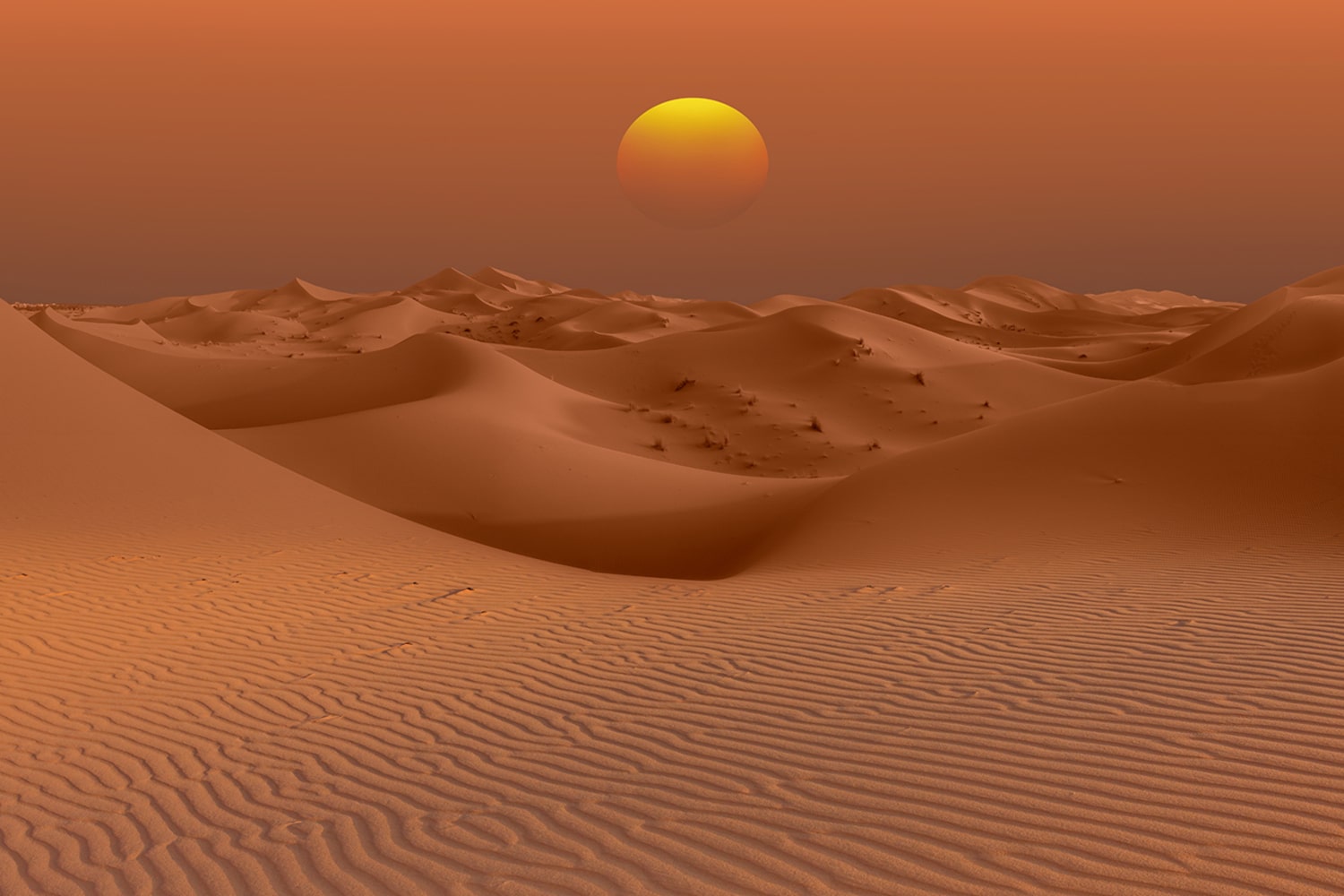The Arabian Desert is one of the most mysterious and impressive natural regions in the world. Its vast expanses cover a large part of the Middle East, where sand, heat and wind shape a unique landscape. At first glance, it may seem empty and harsh, yet it holds a rich history, significant cultural traditions and remarkable forms of life. Below are interesting facts, surprising facts and fascinating facts about the Arabian Desert that you may not have known. They help reveal this region not as a lifeless wasteland, but as a place filled with heritage, adaptation and depth.
- The Arabian Desert is one of the largest sandy deserts on Earth. It stretches across Saudi Arabia, Oman, Jordan, Iraq and the United Arab Emirates. Its total area exceeds 2 million square kilometers. This makes it one of the most expansive natural regions in the world.
- The most famous part of the desert is the Rub’ al Khali, also known as the Empty Quarter. It is the largest continuous sand desert on the planet. Some sand dunes can reach heights of more than 250 meters. Their color changes depending on the angle of sunlight.
- The climate of the Arabian Desert is extremely dry. Rainfall is very rare and irregular. Daytime temperatures often exceed 50 degrees Celsius, while nighttime temperatures can drop sharply. These conditions require remarkable resilience from living organisms.
- Camels are the iconic animals of the desert. They can survive long periods without water and withstand significant temperature changes. Camels have served humans as transportation and as sources of food and milk. Without them, long journeys across the desert would have been nearly impossible.
- The Arabian Desert played an important role in ancient trade. Caravan routes crossing the desert connected Europe, Africa and Asia. Traders transported spices, gold, incense and textiles. Some caravans consisted of hundreds of animals.
- Traces of ancient civilizations remain in the desert. Archaeological sites and remnants of early settlements can still be found. The Bedouins, the indigenous desert people, have preserved a nomadic way of life. Their knowledge of nature is passed down through generations.
- The desert significantly influenced the culture of the region. It shaped traditional clothing, music, poetry and customs. Light, flowing fabrics protect the body from sun and sand. Bedouin hospitality arose from the need to help travelers in such a harsh environment.
- Despite its dryness, the desert supports life. Hardy plants such as acacia and various shrubs grow here. Some plants can wait many years for rainfall to sprout. Many animals are nocturnal to avoid the intense heat.
- Beneath the sands lie enormous oil reserves. Some of the world’s largest oil fields were discovered in the Arabian Desert. This transformed the economies of the region. Modern cities and infrastructure developed where once only dunes existed.
- Winds and sandstorms constantly reshape the landscape. Sand can travel long distances, altering the shape of dunes. Sandstorms may last for hours or even days. The desert landscape is always changing and dynamic.
- The Arabian Desert is now a popular destination for adventure tourism. Visitors take part in desert safaris, hiking expeditions and overnight camps under the stars. The night sky in the desert is considered one of the clearest for stargazing. Tourists come to experience the vastness and silence of nature.
The Arabian Desert is not merely a harsh environment but a significant part of human culture and history. It is a place where legends were born, where people learned to adapt and where nature expresses its power in its purest form. Its vast beauty and quiet depth encourage reflection and awe. You may not have known some of these interesting facts, and they show how extraordinary a place the desert truly is.





